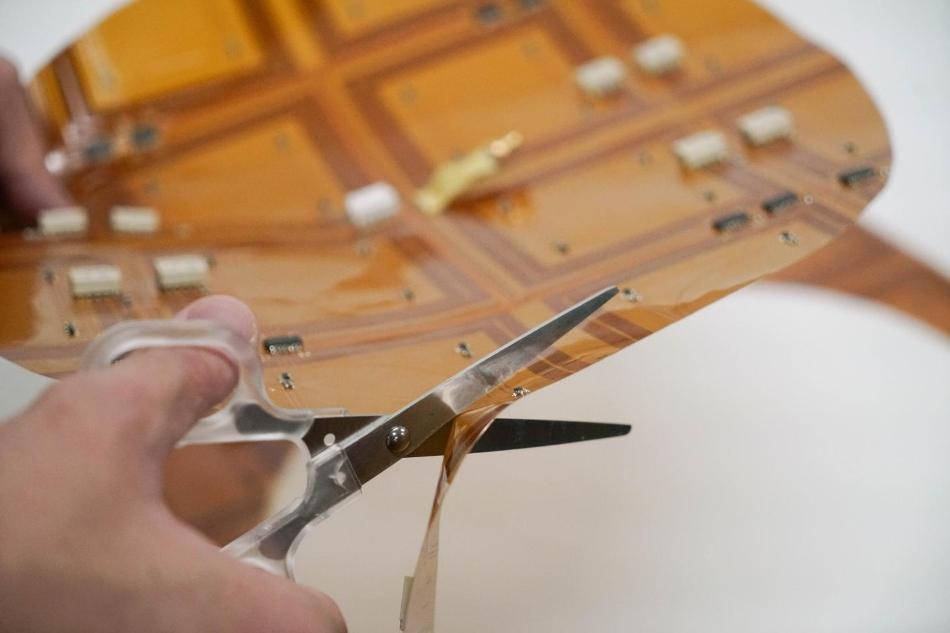Jan 9 2019
At The University of Tokyo, researchers have devised a novel system to charge electronic devices like smartwatches and smartphones wirelessly.
 The charger still functions after it's cut due to a wiring method known as H-tree wiring (CREDIT: (c)2018 Kawahara Laboratory)
The charger still functions after it's cut due to a wiring method known as H-tree wiring (CREDIT: (c)2018 Kawahara Laboratory)
In the new technique, a flexible, cuttable power transfer sheet charges devices wirelessly. This sheet can be shaped or even be cut to pieces with scissors to fit different shapes of objects and surfaces.
I really wish to live in a wireless world. Imagine homes and offices without tangled cables, and think how useful it could be for emerging fields like robotics.
Ryo Takahashi, Graduate School of Information Science and Technology, The University of Tokyo.
Takahashi is a master’s student whose earlier research on robotics motivated him to develop means to power devices like smartphones or robots in a simple and easy manner. This route allowed him to develop the world’s first cuttable wireless power transfer sheet. While it may appear strange to develop something simply because it can be cut to pieces, the concept is that the sheet can be reshaped by users to fit any kind of surfaces upon which they want to charge devices.
“You can do more than just cut this sheet into fun or interesting shapes,” continued Takahashi. “The sheet is thin and flexible so you can mold it around curved surfaces such as bags and clothes. Our idea is anyone could transform various surfaces into wireless charging areas.”
In addition, the ingenious design which enables these unique features is what separates this concept from current contactless power chargers. Conductive coils in the charger are used by both systems to induce a current in the device’s corresponding coils. However, the cuttable sheet is not only relatively thinner but also has a broader usable charging area due to the way the coils are engineered. Moreover, the coils are wired in such a way that they can still charge a device, provided sufficient numbers of them stay intact even after the sheet is cut to shape.
Currently a 400-millimeter (15.75-inch) square sheet provides about 2 to 5 watts of power, enough for a smartphone. But I think we could get this up to tens of watts or enough for a small computer. In just a few years, I would love to see this sheet embedded in furniture, toys, bags and clothes. I hope it makes technology more invisible.
Ryo Takahashi, Graduate School of Information Science and Technology, The University of Tokyo.